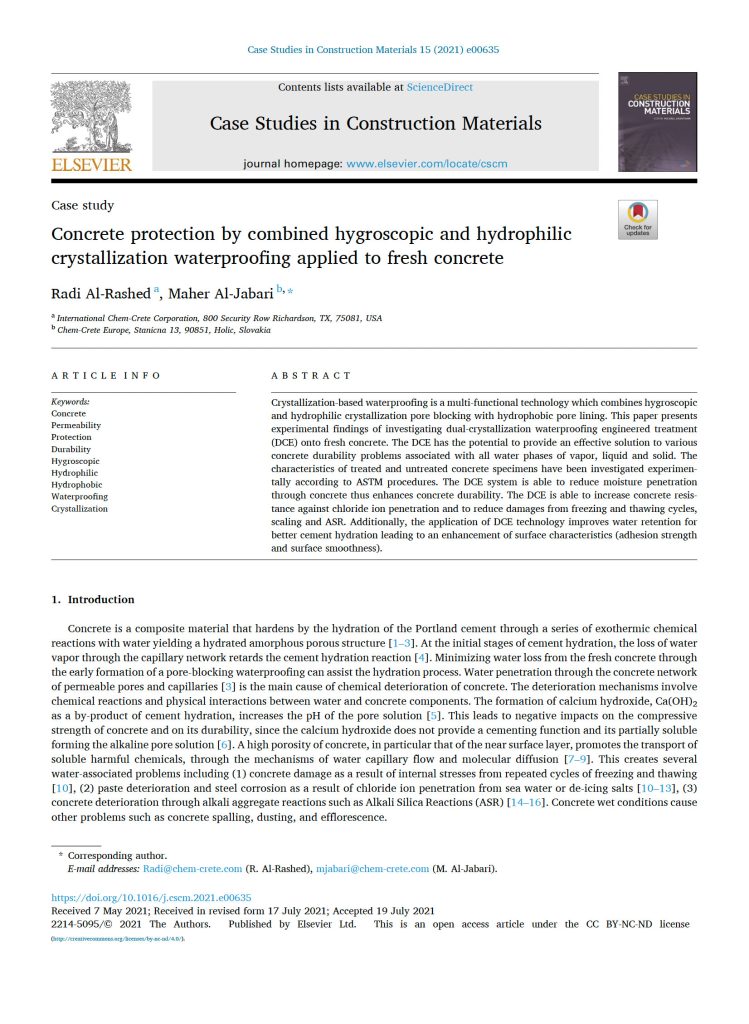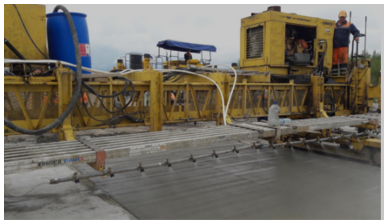Concrete protection by combined hygroscopic and hydrophilic crystallization waterproofing applied to fresh concrete
by Radi Al-Rashed and Maher Al-Jabari
Journal: Case Studies in Construction Materials – Volume 15, December 2021, e00635
Link: https://www.sciencedirect.com/science/article/pii/S2214509521001509
Abstract
Crystallization-based waterproofing is a multi-functional technology which combines hygroscopic and hydrophilic crystallization pore blocking with hydrophobic pore lining. This paper presents experimental findings of investigating dual-crystallization waterproofing engineered treatment (DCE) onto fresh concrete. The DCE has the potential to provide an effective solution to various concrete durability problems associated with all water phases of vapor, liquid and solid. The characteristics of treated and untreated concrete specimens have been investigated experimentally according to ASTM procedures. The DCE system is able to reduce moisture penetration through concrete thus enhances concrete durability. The DCE is able to increase concrete resistance against chloride ion penetration and to reduce damages from freezing and thawing cycles, scaling and ASR. Additionally, the application of DCE technology improves water retention for better cement hydration leading to an enhancement of surface characteristics (adhesion strength and surface smoothness).
Keywords: concrete, permeability, protection, durability, hygroscopic, hydrophilic, hydrophobic, waterproofing, crystallization.
Highlights
- DCE waterproofing technology combines pore blocking with pore lining mechanisms.
- DCE involves hygroscopicity, hydrophilicity and hydrophobicity.
- DCE reduces chloride ion penetration.
DCE protects concrete against freezing and thawing cycles, scaling and ASR.


